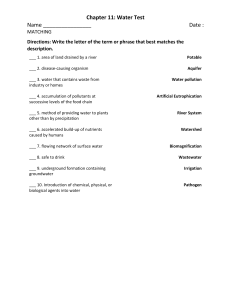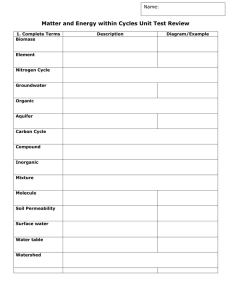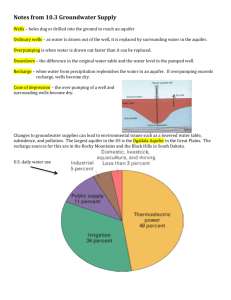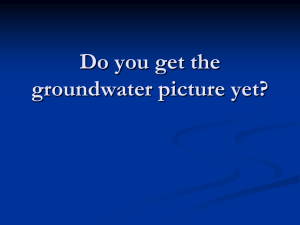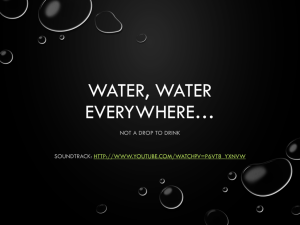Study questions for Water Resources and Pollution
advertisement
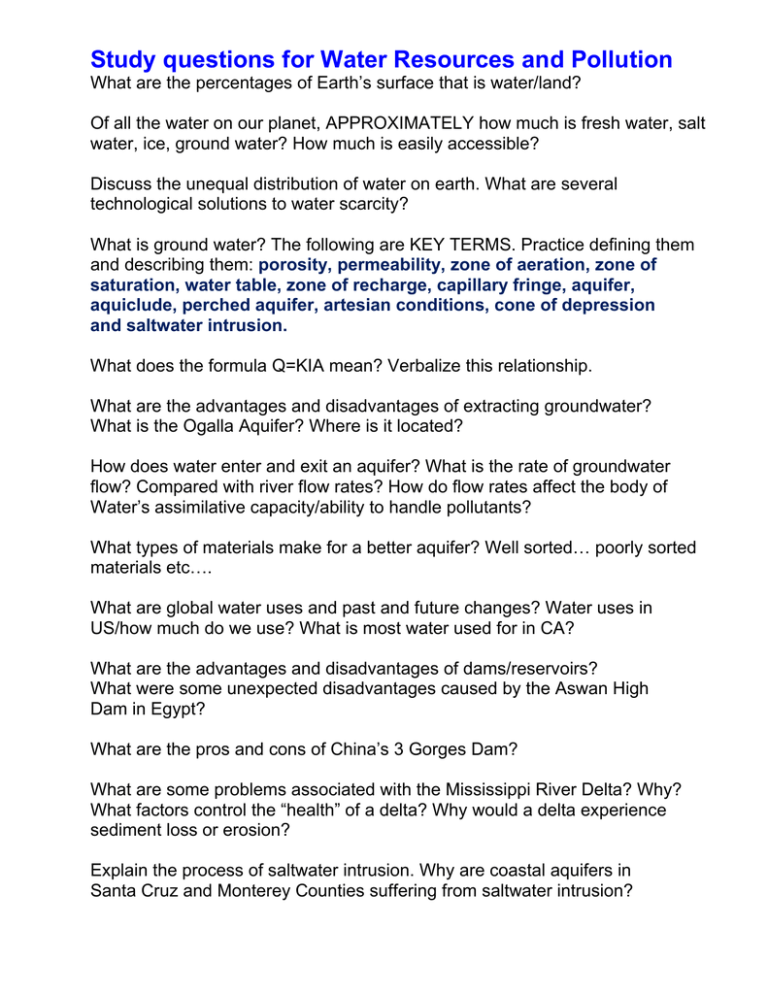
Study questions for Water Resources and Pollution What are the percentages of Earth’s surface that is water/land? Of all the water on our planet, APPROXIMATELY how much is fresh water, salt water, ice, ground water? How much is easily accessible? Discuss the unequal distribution of water on earth. What are several technological solutions to water scarcity? What is ground water? The following are KEY TERMS. Practice defining them and describing them: porosity, permeability, zone of aeration, zone of saturation, water table, zone of recharge, capillary fringe, aquifer, aquiclude, perched aquifer, artesian conditions, cone of depression and saltwater intrusion. What does the formula Q=KIA mean? Verbalize this relationship. What are the advantages and disadvantages of extracting groundwater? What is the Ogalla Aquifer? Where is it located? How does water enter and exit an aquifer? What is the rate of groundwater flow? Compared with river flow rates? How do flow rates affect the body of Water’s assimilative capacity/ability to handle pollutants? What types of materials make for a better aquifer? Well sorted… poorly sorted materials etc…. What are global water uses and past and future changes? Water uses in US/how much do we use? What is most water used for in CA? What are the advantages and disadvantages of dams/reservoirs? What were some unexpected disadvantages caused by the Aswan High Dam in Egypt? What are the pros and cons of China’s 3 Gorges Dam? What are some problems associated with the Mississippi River Delta? Why? What factors control the “health” of a delta? Why would a delta experience sediment loss or erosion? Explain the process of saltwater intrusion. Why are coastal aquifers in Santa Cruz and Monterey Counties suffering from saltwater intrusion? What are the pros and cons of watershed transfer? Describe California’s large aqueducts. What happened to the Aral Sea and discuss some problems associated with this watershed transfer project. What is desalination? What is the most common technique used? Why is there a need for desalination. What does IPR stand for? Where is it being used? How can we improve Water Efficiency? Water Pollution What are ways to analyze water quality? What are the major categories and sources of water pollution? Describe the associated problems or harmful effects for EACH type. This is important. Try doing this without looking at your notes or look at the list of 10 (after the point / nonpoint source slide) and describe each one. For infectious agents, what indicator is used to test water quality and what are acceptable levels of total coliform bacterial colonies for drinking and bathing water? What is the difference between point and non-point sources of pollution? Give examples of each type—which are easier to control, monitor and regulate? How does the BOD of a stream change when pollutants are dumped in? What factors influence the dissolved oxygen recovery? As water temperature increases, what happens to the amount of dissolved oxygen? What are the differences in the ability of streams, lakes and groundwater to deal with pollutants? Which does best? Why? What is cultural eutrophication and how does this occur? Practice filling out the “Water Pollution Worksheet”.
